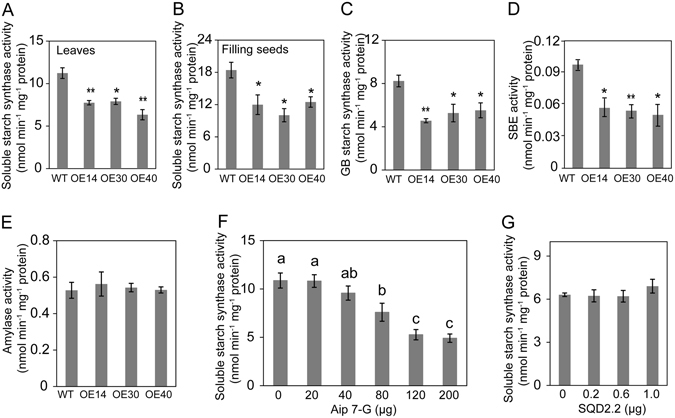Figure 6.

Apigenin 7-O-glucoside inhibited starch synthase activity, and overexpression of SQD2.2 resulted in reduced starch synthase activity. (A) and (B) Soluble starch synthase activity in the leaves and filling seeds of SQD2.2-OE was significantly lower than in that in WT plants. Proteins were extracted from leaves at the tillering stage and extracted from the filling seeds 15 days after anthesis. The same amount of protein (100 μg) from both SQD2.2-OE and WT plants was added to the reaction mixture. Values are the mean ± SE (n = 6). (C) to (E)The activities of granule-bound (GB) starch synthase (C), starch branching enzyme (SBE) (D) and amylase (E) in leaves of SQD2.2-OE and WT plants. Proteins were extracted from leaves at the tillering stage. Values are the mean ± SE (n = 6). (F) Apigenin 7-O-glucoside, the product of SQD2.2, inhibited soluble starch synthase activity in a concentration-dependent manner. Proteins were extracted from the leaves of one-month-old WT plants. Values are the mean ± SE (n = 3). Different letters (a, b and c) indicate significant differences at P < 0.05, according to ANOVA analysis and Duncan’s multiple range test. Api 7-G, apigenin 7-O-glucoside. (G) SQD2.2 itself did not inhibit soluble starch synthase activity. Proteins were extracted from the leaves of one-month-old WT plants and were treated with purified SQD2.2 protein in various concentrations. Values are the mean ± SE (n = 3). Student’s t test; *P < 0.05, **P < 0.01.
